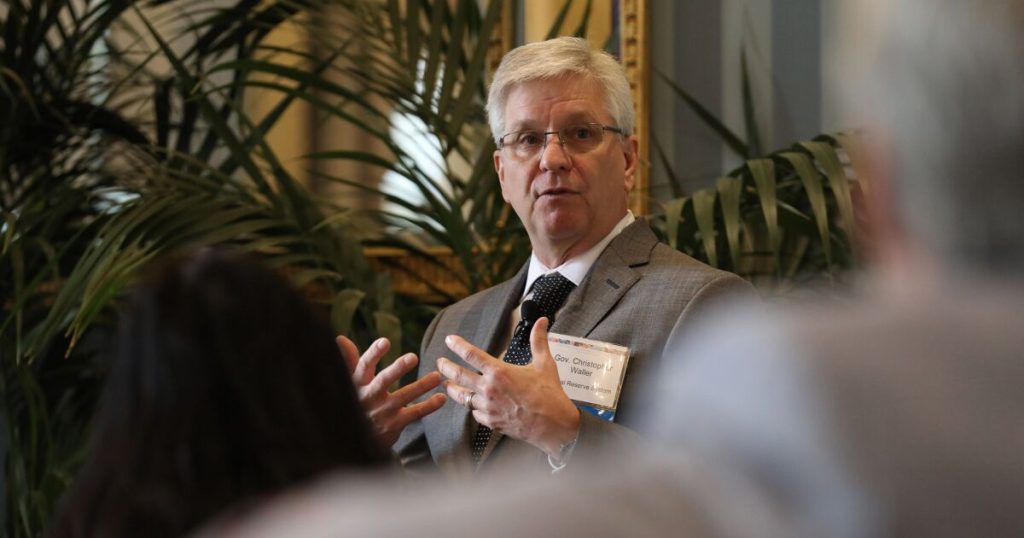- Key insight: Federal Reserve Gov. Christopher Waller’s comments suggest the barriers to nonbank firms acquiring a “skinny” Fed master account — a concept Waller himself introduced late last month — may be higher than were previously assumed.
- Expert Quote: “There’s a misunderstanding out there that somehow just a fintech can show up and say, ‘Hey, I’d like a skinny master account.’ You have to have a bank charter to do this.” — Fed Gov. Christopher Waller
What’s at stake: The concept of allowing nontraditional firms to acquire a limited Federal Reserve master account is in the early stages of development, and Waller said in earlier appearances that the Fed is still exploring the idea and asking for stakeholder feedback.
Federal Reserve Gov. Christopher Waller said Thursday there has been a “misunderstanding” about who could qualify for a so-called “skinny” master account, an idea he proposed in late October.
Speaking at an annual economic conference hosted by the Bank of Canada, Waller said entities applying for the limited payment account must have a bank charter.
“There’s a misunderstanding out there that somehow just a fintech can show up and say, ‘Hey, I’d like a skinny master account,'” Waller said. “You have to have a bank charter to do this, so if you’re not a bank and you don’t have a bank charter, you don’t have the right to ask for one at all.”
Waller, chair of the Fed’s Committee on Payments, Clearing, and Settlement, said he expects the skinny master account to add to the Fed’s balance sheet but emphasized that the account is designed to give all bank entities access to its payment rails.
“Why do we just have one master account?” he asked Thursday. “Why not just tailor this thing to the risk of the banks that are asking for it? Maybe we’ll give you a master account, but it doesn’t have all the bells and whistles.
“Really, the idea is to try to get away from one luxury payment account for everybody that can get it, or you just tailor and give access to people,” Waller added.
Waller’s comments could add to confusion among banking stakeholders, as his previous remarks were widely interpreted to mean that nonbanks and/or state-chartered special purpose depository institutions could be eligible for access to the Fed’s payment settlement rails.
“There are many eligible firms engaged in substantial payments activities that may not want or need all the bells and whistles of a master account, or access to the full suite of Federal Reserve financial services, to successfully innovate and provide services to their customers,” Waller said in late October. “The idea is to tailor the services of these new accounts to the needs of these firms and the risks they present to the Federal Reserve Banks and the payment system.”
“I want to be clear that this is just a prototype idea to provide some clarity on how things could change,” he said in his previous speech.
Waller’s remarks come as the question of nonbank integration into the regulatory perimeter is percolating at other banking agencies as well. Over the course of the year, a number of nonbank fintech firms — including
“If there are new entrants that meet the statutory factors as they currently exist, and can meet our supervisory expectations … and they want to voluntarily come into the system where they can actually be held to the same standard, and where we can, through our regulation and supervision, make them better over time, I think that’s a positive thing that people should welcome,” Gould said during a fireside chat at The Clearing House’s annual conference on Tuesday.

